Enter Your Email To Receive It Now!
You will only receive my emails and you can unsubscribe at any time.
You want to adopt a cat but you do not know where to start? Maybe you already have a cat and want to adopt a second one, so this guide is for you.
In addition I offer you my E-Book '' Help Your Cat Live Longer '' which costs 10$ on amazon for free.
As its name suggests this book will help you avoid the mistakes that many cat owners make, decrease the longevity of the cat.

In order to decide what cat to get, you first need to do a little research into the different breeds that are available.
Just like any other type of animal, different breeds can mean different mannerisms and behaviors.
There are many different breeds to choose from and what type of cat that you will chose will depend largely on if you are looking for a cat to have in your home as a pet or one that you can breed.
Listed below are many of the popular and common cat breeds that might help you in your decision as to what cat is going to be the best fit in your life. There is a wealth of information throughout this Guide that will help you decide what kind of cat to get or even if a cat is right for your life right now.
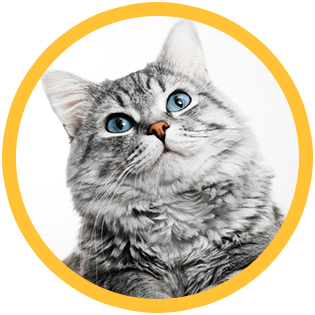
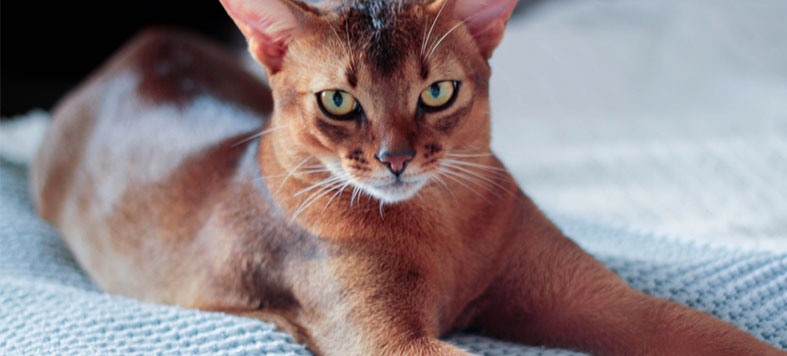
The Abyssinian tends to have a lot of energy, and tends to be very active and playful. This cat is a great pick if you are looking for a feline friend that is fun and entertaining. Plus there is the factor that the Abyssinian is a very attractive cat. They are a midsize cat, with beautiful green and gold eyes of an almond shape, and a striking ticked pattern. There are generally three different breed colors.
The first is called ruddy; this is where the cat is an orange and brown color that is marked with dark brown or black. The second color for this breed is red; the cat has a warm color of fur that has chocolate brown spots. The last color of this breed is blue; this is a unique color where the cat looks like they have a mix of different shades of slate blue. They are a graceful and regal looking feline with soft, silky coats, and their hair is medium in length.
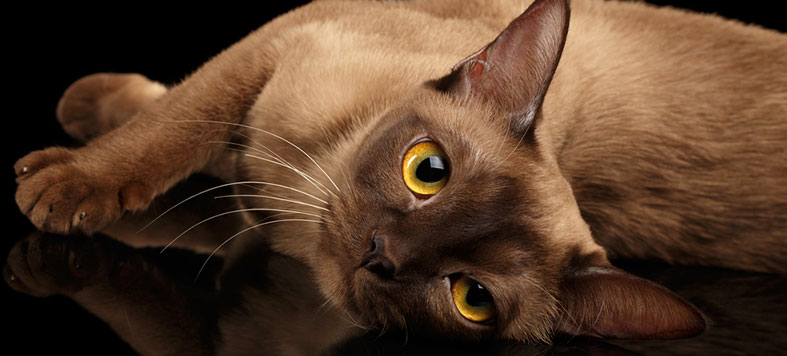
If you are looking for more of an affectionate cat that isn't going to freak and claw you, a Burmese might be just what you are looking for. The Burmese is of medium size with quite a muscular body. Because they have more of a solid build, it might come as quite a surprise when you pick them up and feel the full effect of their weight. They are quite beautiful with a short glossy coat. With breeding over the years, there have come to be three different types of Burmese; there is the contemporary, traditional, and the European.
The contemporary has more of the stocky body, rounded head, and very pronounced round and spaced eyes. You can find them in coloring such as sable, champagne, blue, and platinum. The traditional has closer ties to the original breed. They are more of a sturdy yet muscular build with a very different head. Unlike the contemporary, the traditional breed has a more rounded head and the face takes on a full look. They come in the same colors as the contemporary breed does. European takes on a more foreign look, much as the name suggests.
The European is more of an elegant looking cat with a slim body type. Their eyes take on a slightly slanted look and they can be found in more colors such as brown, blue, chocolate, lilac, red, cream, seal tortie, brown tortie, blue tortie, chocolate tortie, and lilac tortie. In addition to being a beautiful feline, they are also a very loving and stay with you wherever you go. They love to be with their owners and are very smart cats and great companions.

If you are looking for a spotted cat, the Egyptian Mau is the way to go. They are the only natural breed that sports spots. They are a very beautiful and graceful feline that is also extremely muscular as well. This breed of cat is actually the fastest breed of domestic cat that there is. Although quite muscular, they are not that heavy of a cat. They have heads that have sort of a rounded shape. They have alert looking ears that can be either of a medium or large size and their eyes are the pretty almond shaped eyes with a slight slant and green color. What sets the Egyptian Mau apart from many other breeds of cat is that they have spotting around their body that can vary in shape, size, and location.
They also tend to have an M shaped mark on their forehead that only makes them more unique. They have beautiful coats that are of medium length and can be found in various beautiful colors. They are a very smart cat that is quite active, and extremely loyal to their owners.
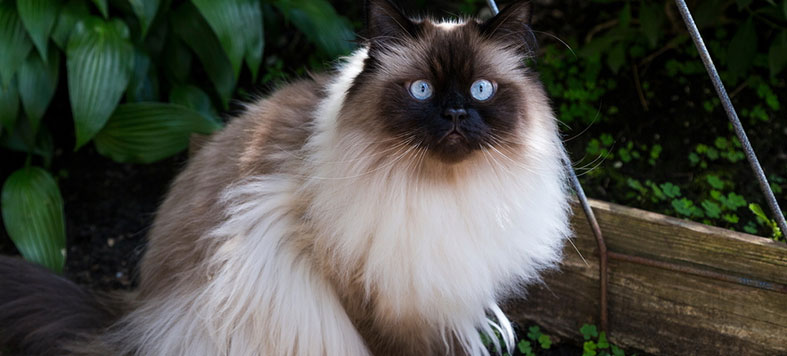
Even if you are not familiar with the name of the breed, it is probably quite likely that you have seen this cat many times, either at a friend's house or on television. The Himalayan is a very popular cat. The only thing is that although this is a very sweet and affectionate cat, it is also a very time consuming feline to have as well when you take into account all the combing of their fur that you will have to do in order to keep them from looking scraggily.
The Himalayan is not of the petite variety, but more of a heavily boned feline. They have round body and are very broad, plus their coats only add to the rounded look that they already have going. There are two main facial types when it comes to the Himalayan. There are the extreme and the traditional.
Both have small and rounded ears that are set low on the head. They have round eyes with full cheeks and a prominent chin. The extreme face gives the cat a round and flattened look.
The traditional also has a round head, but the nose is different and they have an up turned mouth. It has been observed that the traditional breed experiences fewer health related problems than the extreme. These cats are great as indoor pets. They are great if you are looking for a calmer type of cat that also has a streak of playfulness in them. This type of cat needs the affection of their owner and loves to be combed and loved.
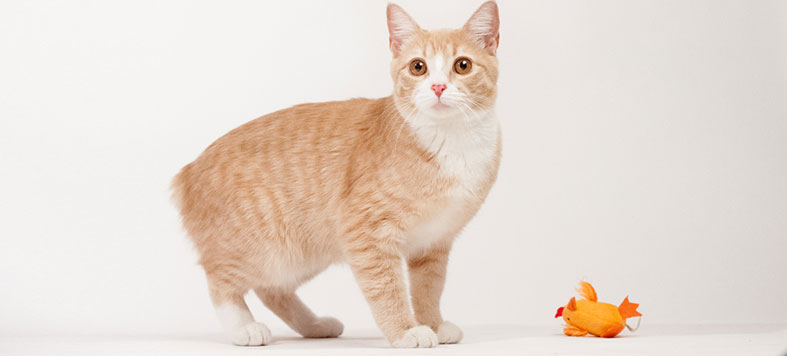
If you want a cat but don't want to have to worry about its tail swishing you in the face or knocking down knickknacks, you might just find yourself interested in a Manx. Believe it or not, the Manx is the only breed of cat that has no tail. Although this feline has no tail it is defiantly all cat. They have a round sort of look to them, from their round head to their round behind.
They are a muscular and solid breed. What adds to their beauty is the short, glossy coat that they have. Although they are tailless, they do possess a sort of stub at their spine. The Manx has a great personality, are quite intelligent, and has an even disposition.
This cat tends to find one companion in particular that they truly love, but are great with all family members. They are playful, active, and adjust well.

If you are truly looking for a cat that you can pet, groom, and fawn over the Persian might be just what you are looking for. The Persian is an extremely popular cat that has a ton of hair. There is no doubt that these cats look absolutely regal and beautiful, but there is defiantly a fair amount of grooming to do. What makes this particular feline so popular is that they are very sweet, loyal, and affectionate cats. Another great feature about choosing a Persian is that you can find one in almost every color or pattern imaginable.
Although a furry feline, the Persian is a heavy bones and broad cat, it definitely gives the impression of roundness all over due to both body and fur. If you are looking for a cat that will sit and watch television with you, getting a Persian is a sure bet. They love to sit around and laze away the day with their owner. They are gentle, sweet tempered, and trusting. Although they do enjoy lounging, you can also expect them to find the time to play after a good nap. This type of cat needs the attention of their owner, but they won't be obsessive about it.
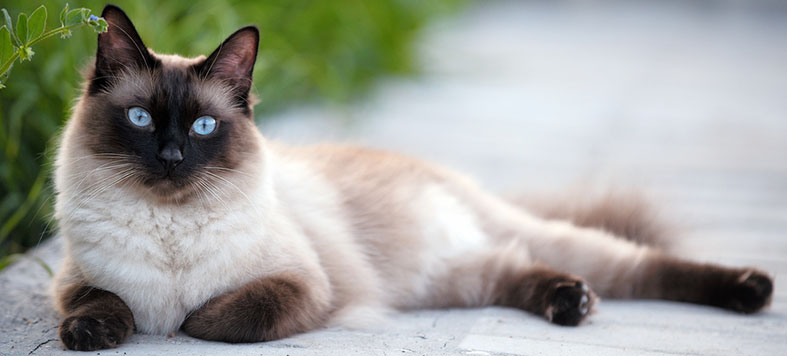
Even if you aren't quite a guru when it comes to cats, you are probably well aware of what a Siamese looks like. This cat has been displayed in cartoon animations such as The Lady and the Tramp as well as other movies such as That Darn Cat. They are definitely a widely recognized breed no matter where you go. There is absolutely no denying that the Siamese cat is a beautiful animal. They have beautiful big blue eyes and a gorgeous coat.
The body of the Siamese is a light color and the face, tail, paws, and ears are darker. They are a shorthaired cat if you are looking for a feline companion that doesn't require an enormous amount of grooming and doesn't shed like crazy. They are a medium to large size cat that is considered very muscular. As you might have observed in many movies, the Siamese cat is a very intelligent feline. In the same light, although intelligent they can also be quite annoying at times when they try to communicate with their owners through a very distinctive yowling sound.
If you are looking for a quite cat, the Siamese might not be a great choice. This is a cat that will try to get its way and is very needy. They are also active and affectionate animals that can be a lot of fun to have if they fit your personality and lifestyle.
Obviously these are not all of the cat breeds that are available to choose from. Listed above are a few of the more common breeds that many people find enjoyable to have in their home. There are many books or other resources that will list almost every type of cat breed imaginable if you wish to keep looking for a breed that fits you. Just as with any other type of animal, every breed is different and offers distinctive qualities just as every cat has a different personality.
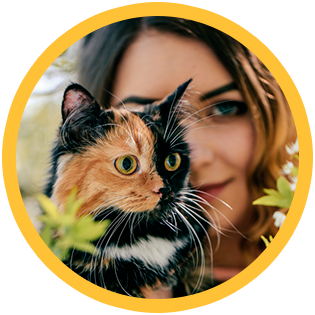
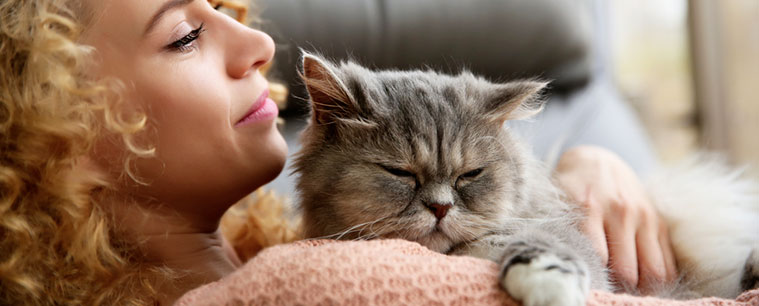
Now that you have looked through a few of the different breeds available, you might have a better idea of what kind of cat that you are looking for. Cats can be great pets for people who are looking for an animal, but want one that is a little more independent. There are of course many other considerations to take into account before rushing out and buying your cat based on a picture or vague description.
A good question that you need to consider is if you are looking to get a male or a female cat. There is a vast difference between the two species just as there is with humans or any other type of animal. Males tend to be a larger cat than females and also boast a more extrovert personality.
If you do decide to get a male you have to make the decision on whether or not the cat is going to be neutered. Just as a cautionary note, when a male cat is not neutered they tend to have a much different personality. You might find that they spray urine all over, will try to roam, and might just pick fights with other cats if there are any in the house or outside. When you choose to neuter them, you will be able to avoid a lot of these tendencies. Females have different traits than males do. They are a more careful and gentle than males are.

They tend to also be quieter as well. Again comes the question on whether or not to spay your female feline companion. If you choose not too you will be looking forward to dealing with her heat cycles and all that they entail, especially not a good thing if you have any unneutered male cats in the house.
Once you have made a decision on whether the cat will be male or female you need to decide how much hair that you want to content with. That is, do you want to get a long hair cat or a short hair cat? Even though you may think that you want a particular breed, it might not match up with what you want in a cat. This is really a choice that depends on your personal taste.
Long haired cats might seem great to one person and a total nuisance to another. If you choose to go with a long haired cat, you need to understand that it will be up to you to keep you cat groomed and looking nice. Just think about your own hair, if you have long hair then you need to keep it brushed or combed on a daily basis, a long haired cat is no different. They need their owner to comb their lustrous locks on a regular basis so they don't begin to look like a scraggly cat.
Again, you have to realize that when anything has long hair it tends to shed, a lot! If none of this sounds like fun or appealing in any way it might be a good indication that you in fact are not looking for a long haired cat such as a Persian, but a short haired cat instead.

Now that you have the first two factors of choosing a cat decided, you next need to decide how much money you really want to spend. The reality when you go to buy a cat you can choose from mixed breeds or purebred cats. When you buy a mixed breed there isn't quite as much to worry about because you don't have to worry about all the pedigree issues and such, plus as you might have guessed they aren't going to cost quite as much.
On the other hand all of that changes when you plan to buy a purebred. There are certain precautions that you will have to take before you buy a purebred cat. First you need to research the different breeding establishments to make sure that they are of good reputation. It won't hurt to do a little bit of research and to even visit different establishments and ask question and look at the cats that they are offering before you actually buy one.
The last question again is one of preference; do you wish to buy a kitten or a cat? Many might jump to the answer of kitten, but as everything there is much to consider before making such a decision. You need to realize that a kitten is in essence a baby and as such requires a lot more time and attention than a grown cat does. It's not to say that an older cat doesn't require time and attention, but normally they are quite a bit easier to care for than a baby kitten.
Once you have all of the questions answered, you feel a little more informed about what type of cat that you want to buy. You can always go to different pet shops or breeders and ask whatever questions about the breed that you can think of. You can also talk to any friends or family members that own their own cats, they will have a wealth of information that they might be more than happy to share with you if you ask.
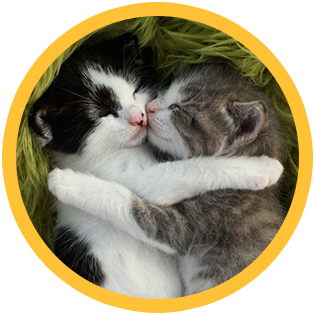
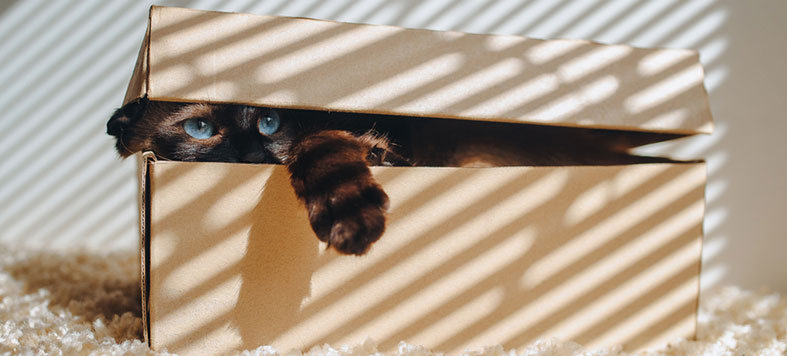
Buying a kitten is a lot different than buying an older cat. Before you rush out and buy or take the first kitten that is offered to you, there are a few things that you should know. As with any animal, there are certain things that you should look for to make sure that the kitten is healthy. By paying attention and looking for these different things, you might be able to save yourself and your family from picking a kitten that is going to be quite sickly or even die. Below is a list of things that you need to look for in any kittens that you are considering buying.
• Make sure that the kitten has clear, bright eyes
• Look to see if the ears and nose are clean and not gunky
• Look for a thick and shiny coat
• You don't want any skin that has fleas, scabby patches, or any types of lumps
• Open the mouth of the kitten and look for firm, pink gums
• Observe the kitten to make sure that they are attentive and playful

Next comes the asking of the pet shop or breeder who is trying to sell you the kitten. You need to ask them some questions that they should have no problems answering. If they try to avoid you or put your off it might be a good sign that you need to move onto a different pet shop or breeder. Below are lists of questions that need to be asked before you buy a kitten.
• Ask about the kittens vaccinations
• Ask about parasite checks
• Have them tell you the age, gender, and breed of the kitten
• Do not buy a kitten that is not at least six to eight weeks old
• Ask about their diet and nutrition
• Have them provide you with the Veterinarians name, number, and address
• If you are looking at a purebred, ask about the kitten's registration papers
• Ask if you can have your own veterinarian check the kitten out before the sale if final

If the pet shop or breeder is reputable they should not have a problem answering any of these questions or letting you take the kitten to your own veterinarian for a checkup. Just remember that you can always find another pet shop or breeder that has the kitten you are looking for if something doesn't seem quite right.
Because you are choosing to buy a kitten there will be quite a bit of training to do, just like with a baby, the kitten has to learn. The first lesson that will make life a lot easier for you and your kitten is litter box training. This really shouldn't be too hard of a lesson for either of you since most kittens take to the litter box quite naturally.
What is important to note is not to be in your kittens face while he or she is trying to do their thing. Patience is the key to any type of training, and this is not different. Of course, there are a few things that you can do in order to help this be an easy experience for your kitten.
•Make sure that your kitten can climb in and out of the litter box; sometimes they will have trouble in a litter box that is too big
• Put the litter box in a quite area that is always accessible
• Clean the litter box on a daily basis and keep the litter changed regularly
• In order to establish a pattern, make sure you put your kitten in their litter box when they wake up and after they eat
• Everyone benefits from being told they did a good job, kittens are no different, make sure to let them know when they have done a good job
• Keep the litter box in the same place, don't move it around
• If you have more than one cat, make sure they all have their own litter box

You might have heard your friends or family talk about baby proofing their home when their child began to be mobile, if you plan on getting a kitten you will find yourself doing the same thing. A kitten is in essence a baby, but of the feline persuasion, as such they are just as curious as any other type of baby. You need to take the time and look at your home from a kitten's perspective, find possible hazardous items, and remove them accordingly
You aren't going to be able to anticipate everything, but it is quite advantageous to the health and well being of your kitten to take some precautions
• Kittens can be quite clumsy, make sure that all of your windows are secured and keep your kitten off of anything high such as a second story house walk out
• Move all cleaners and anything else harmful in an area that your kitten can not access. This goes for any harmful plants as well, just as with a baby, kittens will chew on whatever is handy such as a plant
• After you use the restroom, close the toilet lid. This is a handy piece of advice if you have kittens or small children in the home
• Don't leave plastic materials such as trash bags or plastic storage bags lying around, again helpful for kittens and children
• After you have finished your six pack of beer or soda, cut up the plastic ring containers so that your cat doesn't get caught up in them. This is also an environmentally kind thing to do so other animals don't share a bad fate
• Anything electric, sharp, or pointy needs to be responsibly stores so your kitten doesn't decide to make a dangerous object its next chew toy
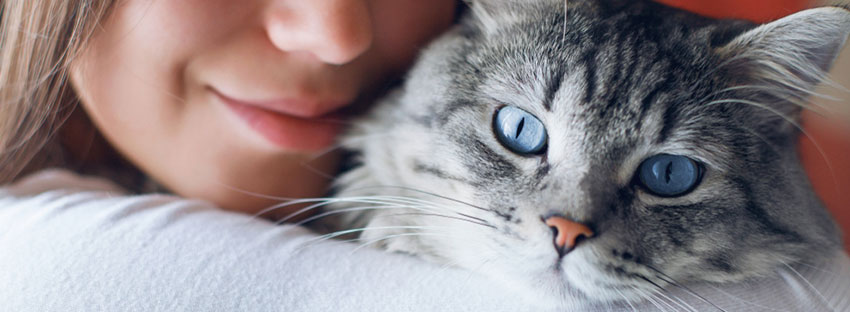
If you have children or other animals in the house you will need to make sure that your kitten is introduced to them slowly and properly. Older children are not as much of a concern as small children are. You need to make sure that they understand the proper way to treat their new kitten. You need to teach them how to hold it properly and not to pull on its legs, face, tail, or ears. Young children must learn that the kitten is a living thing that they need to treat with love, care, and respect. You can help you kitten feel a little safer by getting down to his or her level when it comes to play time. This will make you not seem quite so huge and scary to the kitten.
You also need to pay close attention how other pets in the house treat the new kitten. It is not a good idea to simply leave a new kitten with an older cat or dog. Take the time to introduce them to one another while being attentive to their reactions to each other. Normally older cats will be tolerant of the new kitten and even tend to it after they are comfortable with one another.
Dogs may take a little longer to get used to the situation of a new kitten in the house. Just remember to be patient and to make sure your other animals in the house gets the love and attention that they need, make them feel just as special as the new kitten. Below are a few tips that might help you with this process.
• Don't rush your animals to get along, take it slow and easy
• It might be wise to keep the kitten in its carrier for the first little bit while the others animals can sniff around it without making direct contact with the kitten
• Get a new toy and put the kittens scent on it, and vice versa with the older cats or dogs, then give it to the opposite parties so they can become accustomed to the scent
After doing some of these steps for a while, everyone should begin to get along with little disturbance in the house.
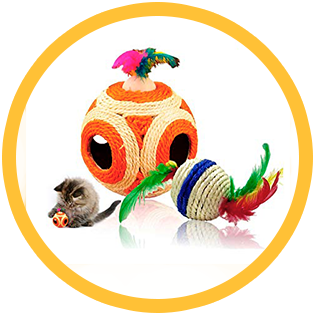
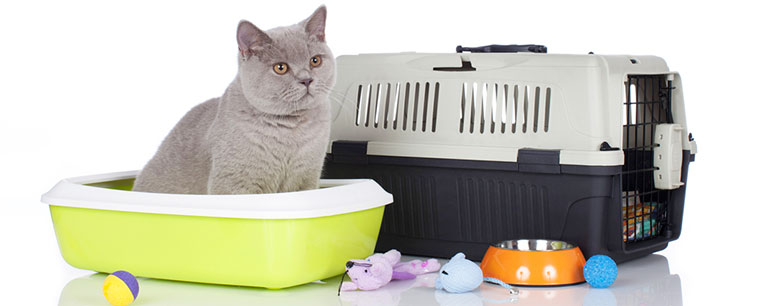
Anytime you choose to get a new pet, you need to make sure that you have everything you will need to take care of that pet with. Cats need certain things so before you get your cat or kitten, you might want to make sure they have everything they need before they come to your home. Below is a list of the different materials you will need in order to make a home for your cat. The list will be followed in more detail as to what you need to consider with each item.
Although these seem like simple items, if you have never owned a cat there are certain things to consider before you go out and buy the most expensive of everything.


The food and water bowl does not have to cost you a fortune. You do not have to go out and buy one with your pets name on it unless you want to. Mainly they just need to be easy to clean and heavy so they won't tip over easily. Because it is possible that your cat might be allergic to plastic, it might be a good precautionary note to opt for the stainless steel bowls. You also need to make sure that your cat has food and water in their bowls as well.


Unless you plan on teaching your cat how to use the toilet like in a popular movie, you will need to purchase a litter box and everything that goes in it. This involves the litter box, the scoop, and the litter. If you have a kitten it is important that the litter box is not so big that they cannot get into it, but on the other hand you need to get a litter box that is big enough for a full grown cat.
What many cat owners may not know is that the litter boxes that have hoods or covers may actually trap foul smelling odors and make your can unwilling to further use the litter box, so it may be a good idea to avoid these altogether.
Another helpful tip is to keep some sort of garbage container next to the litter box so that it will make it easier to scoop the box on a regular basis, just make sure that the container you choose will keep the odor inside the container and out of your room. The last item is of course to find litter that works best for you and your cat. There are many varieties that have odor control and clump better, what you choose is up to your own preferences.
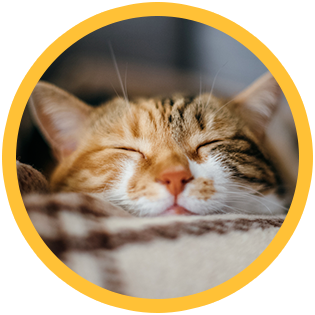
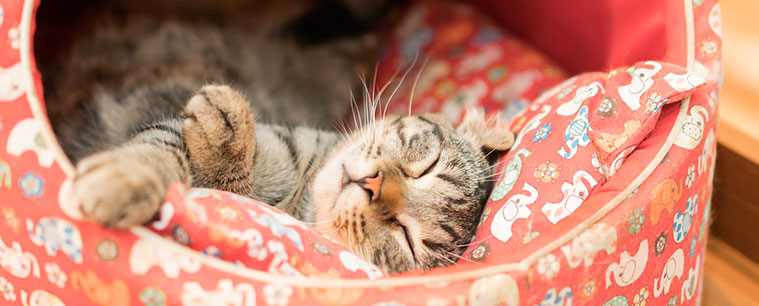
Your pet needs a place in which they can lay down, sleep, and take a nap. A cat bed will also help keep your cat from taking its naps on your bed or couch. This doesn't mean that you have to spend a fortune or have it monogrammed, but it does mean that you need to look for something comfortable. A good choice is a bed that your cat will be able to snuggle in. You can choose from nesting beds, mats, or perches.
Your choice will depend on your cat's sleeping habits and what will fit best in your home. Also, don't be irritated if your cat doesn't take to its new sleeping domain right away, it might take time or your cat might not adapt to it at all. A good tip is to find a bed that is washable so that any messes are easy to clean. It's also a good idea to put the bed wherever your cat likes to sleep or in a quiet area.
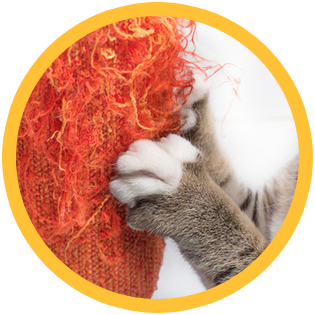
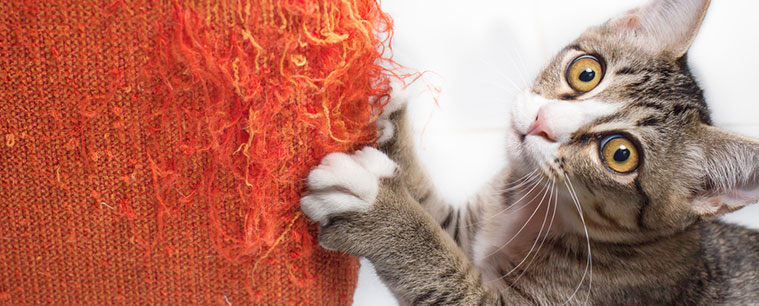
Cats need to stretch and exercise their arms and legs, just like humans do. Unfortunately they choose to do this by scratching things since no one has invented a gym for cats. In order to avoid having them scratch up all of your furniture, it might be a good idea to invest in a cat scratching post, and the sooner the better. A scratching post will help your cat realize that they have their own piece of furniture to claw up and to leave yours alone.
When buying a scratching post for your cat, there are a few things that you need to keep in mind. First, you need to make sure that the scratching post is actually tall enough for your cat to be able to get the full effect. This is so they can completely stretch their body out and still have room to spare. Next make sure that it won't fall over as soon as it has something leaning against it or your cat will be tipping it over all of the time.
If your cat already has a few bad habits such as scratching furniture and such, you might need to train your cat to use the post instead. This might take a little time and patience, but if you make sure your cat is playing with it whenever you are around, they will begin to get the idea, and it also helps if it is in an accessible area to your cat.


Since you may have realized that trying to transport your cat or anyone else's for that matter is no easy task, it is smart to invest in a cat carrier. A cat carrier is great for a cat or a kitten. It will enable you to transport your cat from point A to point B with little to no damage or injury. Plus you will not have to worry about your cat plunking around in your car or attaching itself to you with its claws while you are driving.
A cat carrier is the best choice all around and will help your cat feel secure as well. Since there are a variety of different cat carriers to choose from, again it will depend largely on your preference and how much you want to spend. It's a good idea to make sure that the carrier is big enough to fit your cat and allow them to move around while in it.
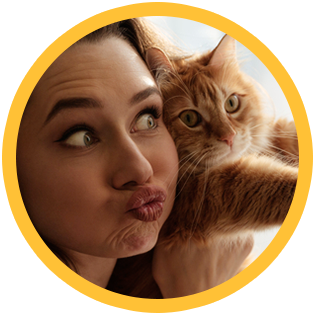

Fortunately you don't have to spend a fortune on toys for your feline friend. This is largely due to the fact that they will play with whatever it is you have handy. Whether it is a string, a leaf, wrapping paper, or a ball, they will be completely content swatting it, biting it, and tearing it apart. Of course, many of these items that you have lying around your house are not the safest for kittens and cats, nor do you want them thinking that it's ok to chew on whatever they want, this is why it's important that they have some of their own toys.
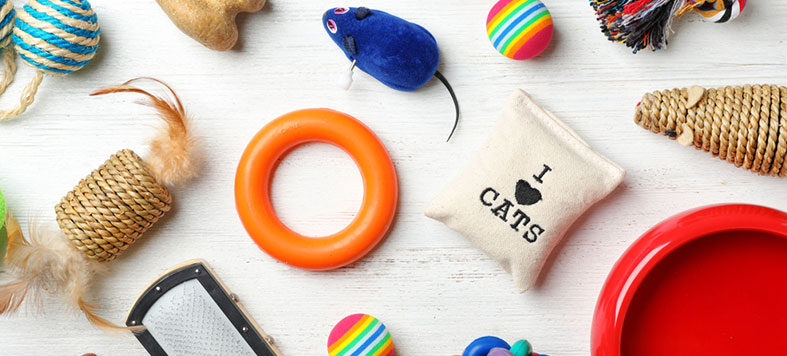
You can choose to go through your house and find toys that will be safe for your cat or to go to the store and purchase a few cat designated toys. Some toys that are safe to give your cat that you find around the house are:
•Small balls that bounce, but they can't chew apart and aren't so small that they will get caught in their throat.
•Sewing supplies such as a empty wooden thread spool
•Balled up paper
•Boxes and gift bags filled with tissue paper
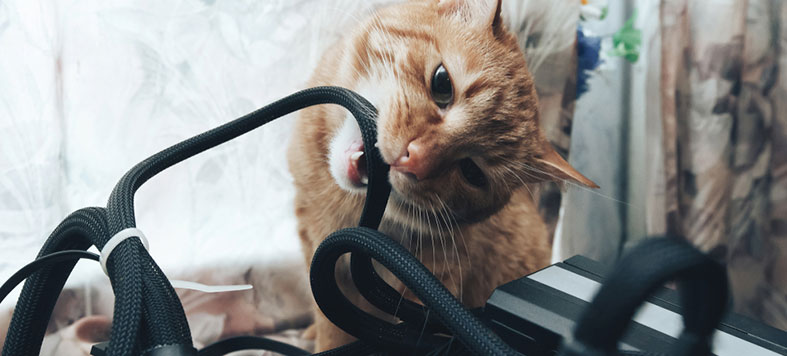
Items around the house that you should not give your cat or kitten for health and safety reasons:
•Balls of string, yarn, or spools with thread on them
•Anything with wire in it
•Anything aluminum or cellophane
•Plastic bags
•Rubber bands
•Nothing that is sharp or pointy
•Nothing that can break and hurt your cat
•Nothing that they can chew off and get stuck in their throat
You can find many fun and colorful cat toys at your local supermarket or pet store. The key is to use your judgment before you buy any of them. Carefully look them over and make sure they won't become hazardous to your cat as he plays with them. It's smart and cost effective to start out with a few toys so that you can see what your cat chooses to play with and what they do not. Also it's important to note that some cat toys should only be used when you are there playing with your cat or kitten.
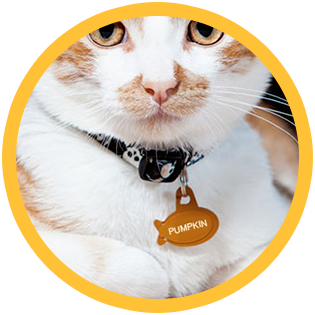
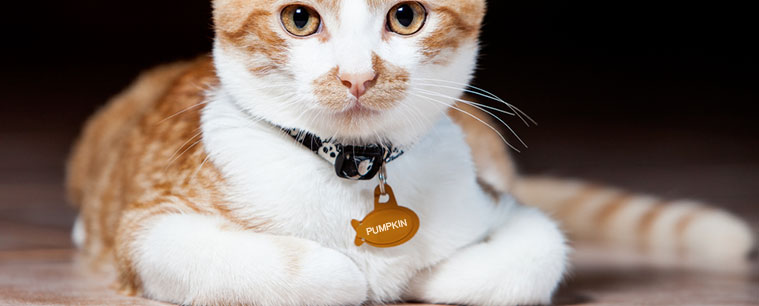
A collar is a very important thing if you have a cat who enjoys both the indoors as well as the outdoors. An important thing to keep in mind when buying a collar for your cat is that if they are quite active and curious, you will need to find a collar that can break away. Although a breakaway collar seems kind of strange, it is really in the best interest for your cat and their safety.
If you cat is outdoors or even inside and their collar gets caught on something you do not want them to choke, that is why it's important to look for a breakaway collar. You should have your kitten or cat begins wearing their collar as soon as possible so that they become accustomed to it.
Also make sure that your cat has some sort of identification on their collar if they get lost or find themselves out of your house. You can also choose to purchase a leash and a harness if you wish to take your cat or kitten out for a walk. If you have the opportunity to train them how to walk with a leash when they are young they will adapt to it much better.
Not all cats like the leash around their neck which is why it might be necessary to purchase a harness which will be more comfortable for the cat and give you more control as well.
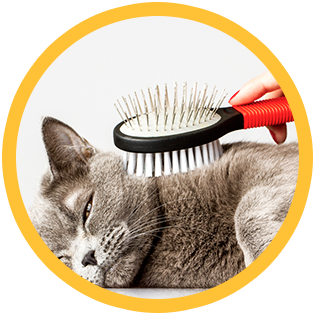

Grooming is a big part of having a cat, especially if you have a long haired cat so you will need to have the proper grooming tools, even if you have a short haired cat. Mainly you will just need to have a flea comb and a brush, but the tools that you will need depend largely on what type of fur your cat has. Grooming is important in order to prevent hairballs and it will also help to cut down on how much cat hair will be on your furniture.

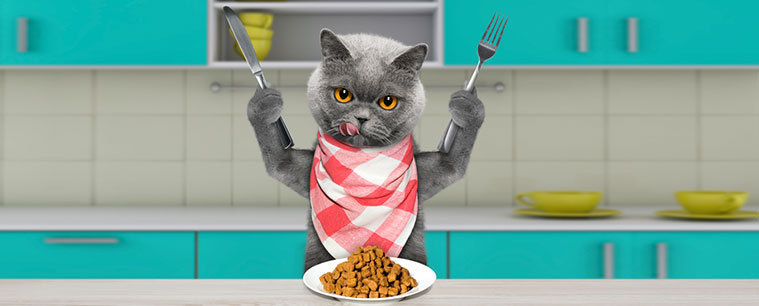
You need to make sure that you read the label on the food that you are getting for your cat. Although it may seem strange because you can is a pet, their nutrition is still just as important as yours is which is why you should read the ingredients so that you are aware of what is in the food you are giving your cat. You also need to pay attention to what formula of cat food that you are purchasing. They have food for adult cats, kittens, aging cats, cats on diets, and everything in between. You don't want to be feeding your kitten adult food and vice versa.
After picking up the right food for your cat, there is matter of where to feed your cat, when to feed your cat, and how much to feed them. If you have never owned a cat before this can be quite a tricky process to figure out all on your own. First and foremost, you need to find a place that is ideal for your cat to eat at.
Think about it from your cat's perspective, you really wouldn't want to eat while adults and kids are running all around you and being loud. This is why you need to find a place that is quiet and accessible for your cat to have their food and water bowl. Once you decide on a particular place, don't keep changing it around because cats don't always deal well with that type of change.
Keep in mind that your cat might make a bit of a mess when they are drinking and eating so it may not be wise to put the food and water in an area that is going to be ruined by the mess. You also need to make sure that you are keeping the bowls clean and changing the water out on a regular basis in order to avoid your cat getting sick.
As far as when you should feed your cat, it is good to get your cat into the habit of eating at a particular time each day. Just as humans eat breakfast, lunch, and dinner at certain times, so should your cat. Of course this might not be quite so easy if you are away from the hose during the day, but there is a solution. If the cat is eating dry cat food you can simply put the entire days ration into the food bowl and your cat can eat from it throughout the day.
If you aren't sure you want to put it all in, you can choose to be half of it in the bowl. It's really up to you and your schedule as to what a regular and convenient feeding schedule will be, but it is wise to get a regular pattern started. Listed below will give you some ideas as to how to coordinate your feeding schedule.
• At 4-6 weeks
- 1/2 to 1 oz
- 3 to 4 times per day
• 7 weeks to 6 months
- 1 to 3 oz
- 3 to 4 times per day
• 7 months to 1 year
- 3 oz
- 2 times per day or you can leave 6 oz in their bowl all day
You can also look on the package of cat food that you buy for what they suggest you feed your cat.
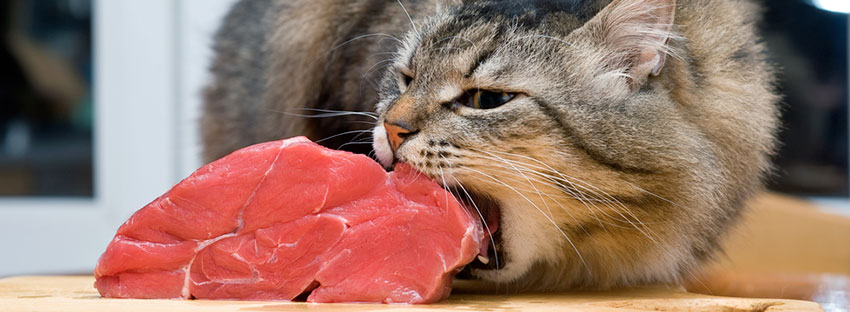
Just as there are certain things that you need to keep in mind when feeding your cat, there are also certain thing that you shouldn't do when feeding your cat.
• You shouldn't give your cat bones; this is a good rule for any pet whether they are a cat or a dog. Chicken bones, pork bones, and fish bones are a big no because they can cause quite a bit of damage to your cats tummy and throat that could lead to a trip to the veterinarian or worse.
• Again a good tip for any animal, don't give your cat leftovers from the table. Although you think that you are doing them a favor by giving them a treat, you could be making a bigger problem when your cat begins to avoid their cat food.
• Cats can't eat two foods in particular, the first being chocolate and the second being onions. Both of these foods are considered a toxic food to your cat.
• Despite what you may have seen on television or in the movies, cats do not need to drink milk. What more, if you give milk to your cat you might find yourself cleaning up after an icky mess since it can cause diarrhea.
• The last tip is not to feed your cat any other animal's food. They need the nutrients that are in their cat food and dog food won't quite give them what they need.
As time goes on and you have your cat, you will find out what foods or pet foods your cat can tolerate.
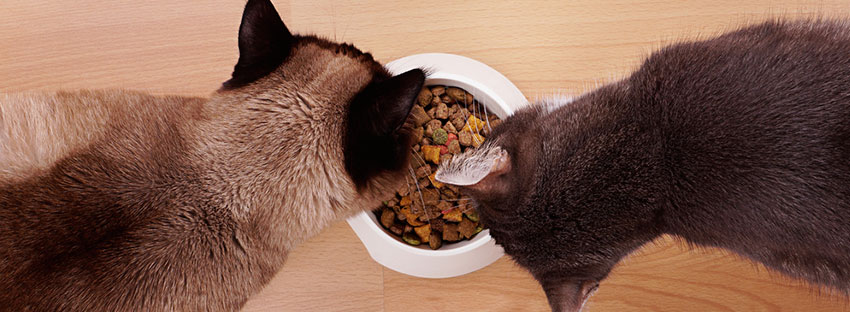
Cats are very similar to people in many ways. Just as it is important to watch what is going into you cats tummy, you also need to keep an eye on how much is going into your cat's tummy. When people eat too much food, over time they become overweight.
Cats are the same, if they become used to eating however much they want, when they want, it is a sure bet that you will have a pretty fat cat on your hands after a while. This is especially true as your cat gets older and less active. If you aren't sure if your cat is fat or not, there are a few telling signs that you can look for that are pretty similar as to when you can tell if a person is overweight.
• A double chin is always a telling sign of a weight problem. If you find that your cat has a bunch of fat underneath their chin, they might have a weight problem
• A big stomach is another sign, if their stomach is hanging, they might have a weight problem
• Another is whether or not you can feel your cat's ribs. On a healthy cat you should be able to feel their rib cage, if you cannot feel your cat's rib cage then you cat is definitely overweight
Just as people think that their weight might not be a big deal, many cat owners might not feel it too distressing that their cat is a little overweight. The reality is that being overweight can cause many health problems in your cat. The more weight your cat has on their body, the more weight and pressure they have to carry around on a daily basis. This is why it is so important to pay attention to what and how much your cat is eating. If you do find that your cat is overweight you should probably speak to your veterinarian about it and look into buying a specially formulated cat food for overweight cats.
Whether you have an overweight cat or not, it's important to make sure that your cat gets the exercise they need. If you can't isn't overweight then the exercise will help keep them active and avoid such a predicament, but if your cat is overweight then the exercise will help them to trim off a few pounds.
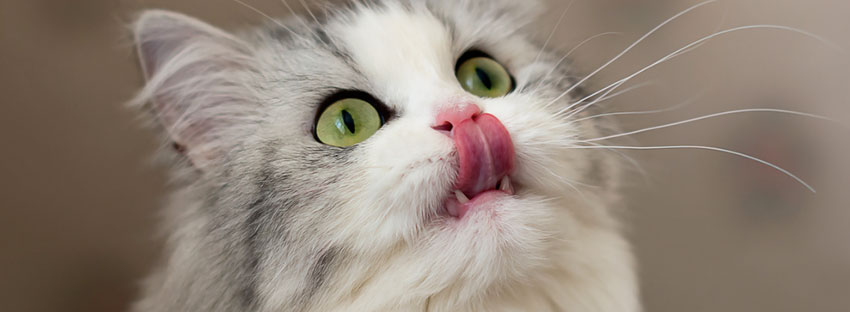
The great thing is that exercising with your cat doesn't have to be a tedious activity; it can be a lot of fun. Below are a few ideas that will help you get an exercise program started with your cat.
• Try to get your cat to run around some
• Take a walk with your cat
•Get your cat some new toys that will encourage him to exercise and jump around
•Strategically place toys and treats all around the house to encourage your cat to walk around
•Switch up the games that you play with your cat so he doesn't get bored
•Even if you are away for the day, leave approved toys out for your cat to play with
•Also, it sometimes helps your cat's activity level if they have another feline companion to play with while you are away
Just because you like to switch your food around because something was cheaper at the store, or a new product looked better, doesn’t mean that you cat should jump around from one cat food to another. Pets are funny this way, once they become used to a certain type of food, switching to another brand because it was on sale doesn't always agree with their stomachs.
If it happens that you want to switch your cat's food then you need to do it slowly. Do not just decide to replace cat food A with cat food B the next day, if so you might find you have a cat with a very upset stomach. In order to switch your cat's food without all of the digestion trouble you will need to put just a bit more into each meal, this process can take a few weeks before the switch is complete.
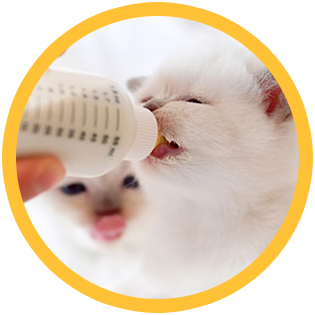

Dealing with a kitten is completely different that feed a grown cat. A kitten is essentially a baby in every way and needs the right amount of nutrition in order to go from being a kitten to a healthy grown cat. Kittens are just like babies in that they need to eat right in order to have strong bones, muscles, and nervous system. You can't feed a kitten the same things that a full grown cat eats; they need their own special food until they are old enough to move onto the next step.
It's always smart to consult with your doctor before you start a regular feeding routine for your kitten, but you do need to recognize that because they have such high energy, they need the proper food to fuel their bodies. You will find that your kitten will nibble throughout the day because they have smaller stomach than a full grown cat.
Just as with human babies, there are going to be times that your kitten doesn't seem particularly interested in food such as when they are teething or have lost a baby tooth. In the same instance your kitten may eat a little more during growth spurts and such. Even when you kitten begins to look and act like an adult cat, don't rush out and buy adult cat food, they need to stick with the kitten cat food until they are a year old because of their need for a lot of calories.
There might also come instances that you need to consult with your veterinarian about your cat's food needs such as if your female feline becomes pregnant or if you cat has health problems that are related to what they eat.

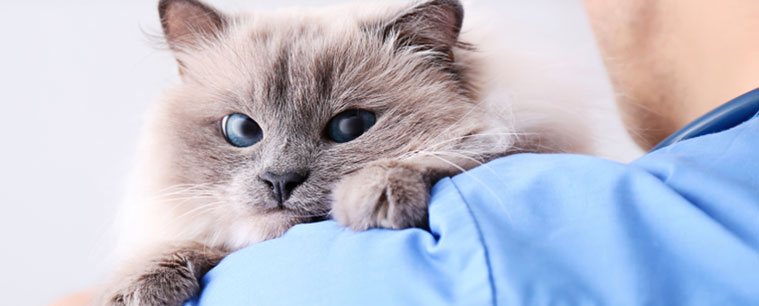
Before you decide to take on any kind of pet you need to understand that different breeds of cat are susceptible to different health issues. Even if it seems like you have a healthy cat in the beginning it is possible that they will be diagnosed with some sort of disease or health related issue as they get older.
There are also certain that you need to do a little bit of research on in order to be aware benefits and side effects. Also there are precautions that you can take as a cat owner in order to protect your cats health and well being.
• As mentioned earlier in the book, make sure that all harmful plants are removed from the area in which your cat lives. Some plants can be poisonous when a cat chews on them.
• Cats can suffer from diabetes. Some might find it strange that humans and cats can share the same illnesses, but it is quite common for a cat to be diagnosed with diabetes. If you suspect this from your cat you should definitely call your veterinarian for further measures.
• You might not be aware that certain medications such as working medications can be hazardous to your cat if not done correctly or with the right medication.
• If there is anything that sparks your concern such as if you cat acts listless, has yucky stuff coming from their eyes or nose, or if they look like they aren't eating, even though you know they are, you should trust your instincts and contact your veterinarian with your concerns.
• If you notice that there starts to be a buildup in your cats ears then they might have ear mites. If this is the case your veterinarian will be able to instruct you on the best way to treat this and prescribe medication.
• Do not let your cat play with yarn or string, this rule is mentioned in the toy section of this book for good reason. All can be fun and games until your cat swallows it and then it becomes a serious matter. If such an instance occurs your need to contact your veterinarian, but it might help to know that white petroleum jelly might help to coat the stomach so that the string or yarn can get out of your cats tummy with little harm.
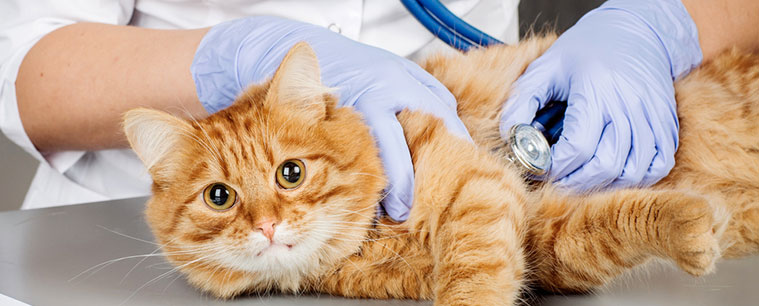
If you aren't sure what to expect with your cat here are a few bits of information that will help prepare you as your cat grows from a kitten to a full grown cat. Within the first month you kitten will begin getting its baby teeth. At two months old a kitten can be fully weaned from their mother who is why it is important not to purchase a kitten until they are six to eight weeks old.
Between six and twelve weeks you will need to take your kitten into the veterinarian for their vaccinations, other shots, and regular checkups to make sure the kitten is doing well. At three months you can look forward to taking your kitten to the veterinarian for their rabies shot in certain states.
After that, anywhere between three and seven months your kitten will begin to get their permanent teeth. The next step will depend largely on whether or not you have a male or female kitten. For females the time to spay is anywhere between six and eight months.
For Males you are looking to neuter them between eight to twelve months. If you are not in one of those states that require rabies shot at three months then between four and twelve months you will need to get your kitten in for their rabies shot. Between six months and two years old, you cat will need various booster shots to keep them current with regulations and for health reason. Once your kitten hits the twelve month mark, they stop being a kitten and become a grown cat.
Whether you are someone who believes in vaccinations or not, they are extremely important to the health and well being of your cat. Just as with humans, there are certain viruses that can attack a cat's system if they are not properly protected. Even if your cat never goes outside, they still interact with whoever comes into your home and whatever germs that they are carrying. It is really easier to take your cat to the veterinarian for their vaccinations instead of dealing with all of the bills that come from a sick cat. Ask your doctor about any vaccinations that your cat may need and have them explain them to you if you have any concerns.
Another major decision when having a cat is the question of whether or not you are going to have your cat spayed or neutered. For those who plan on breeding their cats, this is not a major concern, but for those who don’t have any plans on breeding should strongly consider these options in order to avoid a lot of complications down the road.
Not only are you protecting your cat from contributing to a litter of kittens that weren't exactly in the cards, but you might avoid a lot of behaviors that occur when a male or female is fertile. As mentioned in an earlier chapter, when a male or female cat is not spayed or neutered they may demonstrate such behaviors as urination, spraying their spent, and having to deal with a females heat cycles.
Spaying refers to a female cat in which the cat's reproductive organs are removed in order to eliminate any chance of having kittens. By spaying your female cat you will have a more relaxed, active, and happy cat. Neutering refers to the removal of a male cat's reproductive organs. Again, they will not be able to reproduce but you will find that are not as aggressive as when they are unneutered.
Part of having a cat involves keeping an eye on their general health and well being. This is why it's important to have a good veterinarian that you can go to when you have any questions or concerns. You need to be able to ask questions and receive helpful answers; after all you need to keep in mind that your cat's health is at stake.
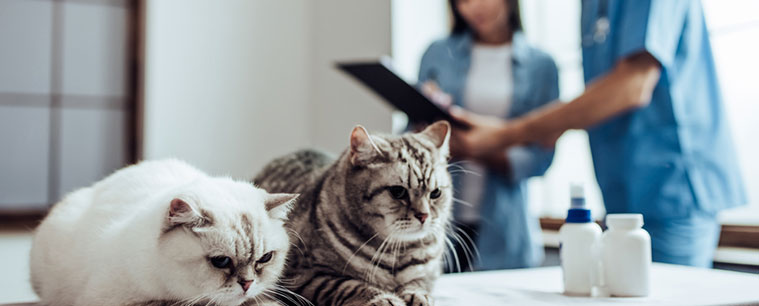
After many question and answer sessions with your veterinarian as you become accustomed to your cat, you will begin to be able to decipher when something is wrong with your cat. It won't hurt if your make it a regular habit to check out your cat for any indicators that they may have a health problem. Below are the main characteristics you need to look for.
• Eyes: a healthy cat has bright and clear eyes. If you notice any irritation such as discoloration or discharge, you might want to ask your veterinarian.
• Ears: a healthy cat has clean ears that don't stink or have anything icky coming out of them. If you notice that there is any discharge or discoloration your cat might have ear mites. Refer to your veterinarian for questions or how to clean their ears.
• Mouth: a healthy cat has pink and healthy looking gums. Indicators that there might be a problem are stinky breath, swollen gums, or sores.
• Body and Fur: a healthy cat has a thick and lustrous coat. If your cat's coat is not shiny and thick, there might be a health problem that you should check into such as lumps, ticks, dandruff, and fleas.
• Nose: a healthy cat should have a clean nose.
If there is any cause for concern you should speak to your veterinarian immediately.
Even if you keep your cat clean, well fed, and vaccinated there is a good chance that your cat is going to be sick at one time or another in their life. This is similar to people, no matter how hard you try, eventually you get sick.
As with people, there are things that you need to look for in your cat to recognize if they are sick or not. Below is a list of symptoms that might trigger some concern.
• Unexplained weight loss
• It's hard for your cat to breathe
• Your cat is constantly throwing up
• Really bad diarrhea
• The cat doesn't want to eat or drink
• Abnormal inactivity
• Lumps on the body
• Blood in urine or not urinating at all
• Abnormal behaviors
• Sneezing and hacking
• Abnormal aggressiveness
• They aren't using the litter box
If any of these behaviors catch your attention you should take your cat to the veterinarian.
No matter how clean you keep your cat there is always the chance that some little parasite is going to call your cat's body its home. If you are keeping a good eye on the health and well being of your cat, you might be able to determine when one of these pesky parasites are moving in.
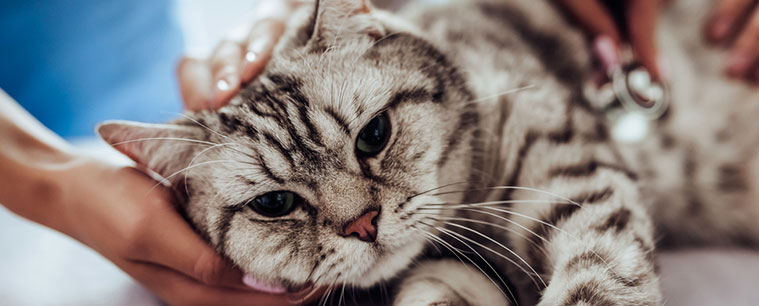
Listed below are some of these parasites that you need to keep a look out for and how to treat them if they invade your cat's body.
• Ticks or Lice: Ticks and lice can be a very annoying problem for you and your cat. In order to determine if you cat is suffering from ticks and lice; you need to check your cat's body. You can decipher a tick because you will either see the parasite or will feel it like a bump on your cat's skin. You can actually remove these yourself if you know what you are doing. You just have to pull the tick out with tweezers, but don't break the body while doing so.
After the tick is removed you should clean the area with an antiseptic. Lice are much easier to remove; you might notice your cat scratching a lot and find that these pests are the cause, just use a spray or powder to send these parasites packing.
• Fleas: Fleas are a common problem with cats. Again, you can find these parasites with a quick examination of your cat's body, this can even be done while grooming your cat. Fleas are not something that you can get rid of on your own; you will need your veterinarian's assistance for this.
You may also need to look over your cat's environment to see if there is a particular reason they contracted the flea infestation. Make sure that after you have treated your cat that you do a thorough cleaning of your cats thins, wash beds, vacuum, and use other flea killing products to help clear these pests out of your home and away from your cat.
• Ear Mites: Ear mites have been mentioned earlier in this book because they are quite common in cats and can lead to many other health problems. This is why it is recommended to clean your cat's ears on a monthly basis. If your cat's ears begin to look a bit questionable and are not pink and clean, but waxy and icky smelling, your cat might have ear mites. You should take this concern to your veterinarian and have your cat treated right away.
• Mange: Mange can be transmitted by a variety of different mites, but you should be wary because this is something that humans can be affected by as well. If you cat begins to lose fur in patches, bleeds, or has issues around the ears, nose, and ears, you cat might have mange. You need to get your cat to your veterinarian right away if this is a concern for your feline friend.
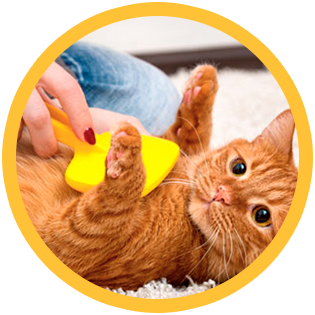
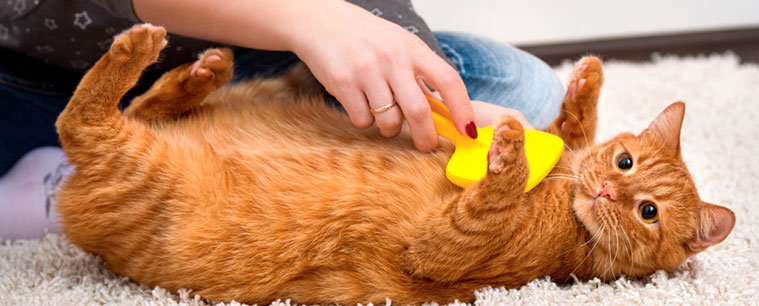
Grooming is also a big part of having a cat. Just as you get a shower every day, do your hair, and whatever else your grooming entails, your cat needs to be groomed as well. Although you don't need to bathe your cat on a daily basis, there are other things that need to be taken care of regularly.
You really don't have to bathe your cat too often, especially if they are an indoor pet, but there will come the time that fluffy needs to get a bath. Giving your cat a bath is more of a two person job so you might need to ask someone to give you a hand. A good tip is to put something like a rug or towel in the tub that the cat can cling onto since there is a good chance the cat is going to freak out when it hits the water.
Make sure that you check the temperature of the water before you decide to dunk them; you need to make it a hot bath so they will be comfortable. Using shampoo specifically made for cats, start at the head and work your way down the body. You need to wash the head, ears and neck, don't skip any spots when washing, but don't get soap in your cat's eyes. After your cat is washed and dried, keep them out of drafts until they are fully dry.
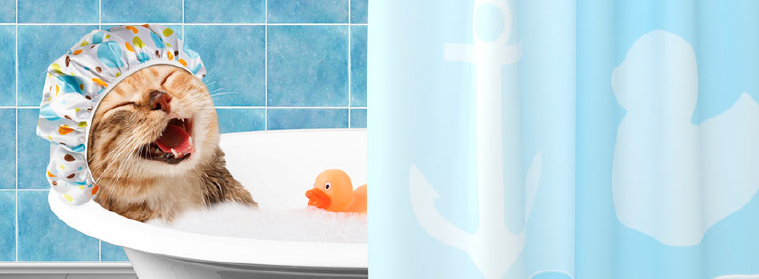
If you start grooming your cat from an early age, they will love for you to take out the brush or comb and start grooming them. It's important to brush your cat when you notice they are beginning to shed their hair, this is for your benefit and your cat's. You cat will love having that extra hair removed, there will be less hairballs, and your furniture won't have hair all over it. If you find the coat knotted when you are brushing, use your fingers to untangle the knot and not the brush or comb.
You also need to make sure that your cat's nails are trimmed; you can choose to do this yourself or have a grooming service do it for you. If you decide to take the task on yourself, you need to get clippers that are especially designed for cats. You also need to be careful not to cut into the quick of the nail or you will end up injuring your cat, this is why many prefer to have a groomer take care of this chore. After the coat and the nails are taken care of, you need to make sure that your cat's ears are clean.
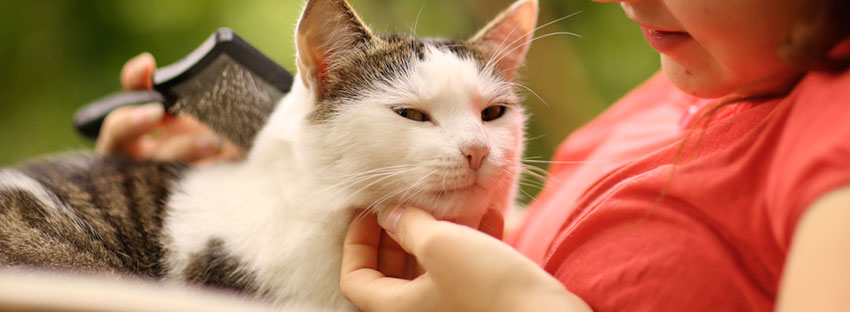
Does any of this sound familiar to your own grooming habits?
Cleaning the ears should be done on a monthly basis. Do not use a cotton tip to clean your cat's ears! This process should only be done with a cotton ball and some mineral oil or alcohol, do not go any further into the ear than you can see to avoid causing your cat injury. The last step in the grooming of your cat involved their dental care. Many cats suffer from plaque buildup and it can become quite a serious health problem. In order to avoid this you need to try cleaning your cat's teeth.
Of course this might not be fully appreciated by your feline friend, but you need to wipe the cat's teeth with a baking soda and water mixture. The only other way to ensure that your cat's teeth get the attention that they need is to have your veterinarian look at their teeth and possibly perform a dental cleaning on them as well.

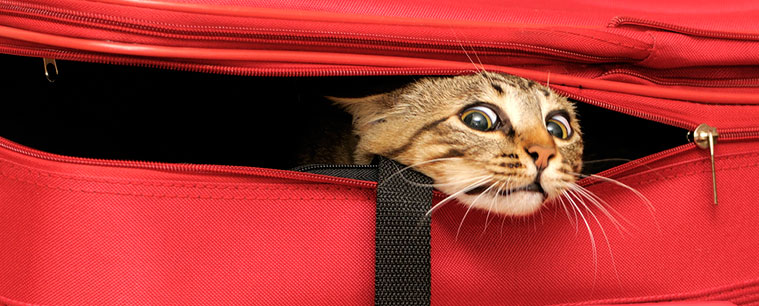
Some cats enjoy traveling where others do not; it really depends on your cat's personality. Traveling can either be and easy or difficult task when you have your cat in tow. There are different ways that you can travel and there are also different things that you need to consider with each mode of transportation.
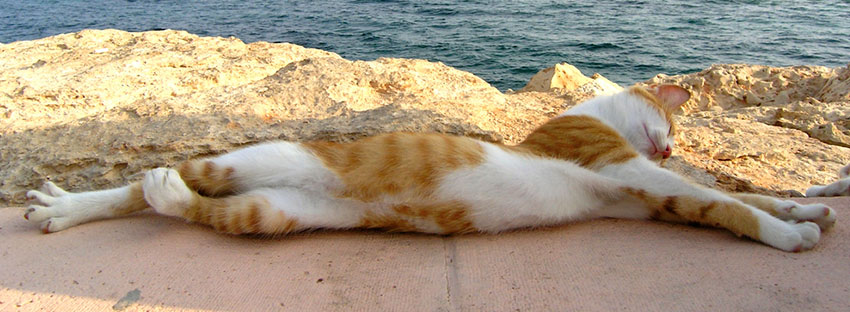
Traveling by plane can be quite tricky if your cat hates flying. You might have the option of having them on the plane with your or having to send them below into an air conditioned cargo area especially designed for pet travel. Some airlines allow you to take your cat along in a carrier that can fit below the seat in front of you. You need to specifically ask the airline if this is an option or not, plus you need to consider if your cat will fit into such a carrier.
If this practice is not allowed you will have to have your cat in a carrier and check them into the cargo area. If you plan on traveling with your cat you need to make your reservation far in advance and inform the airline that you will be traveling with a cat. You also have to make sure that your carrier fits the criteria of the airline. You might even be able to have your cat sedated for the flight time frame by your veterinarian to make travel a little easier.
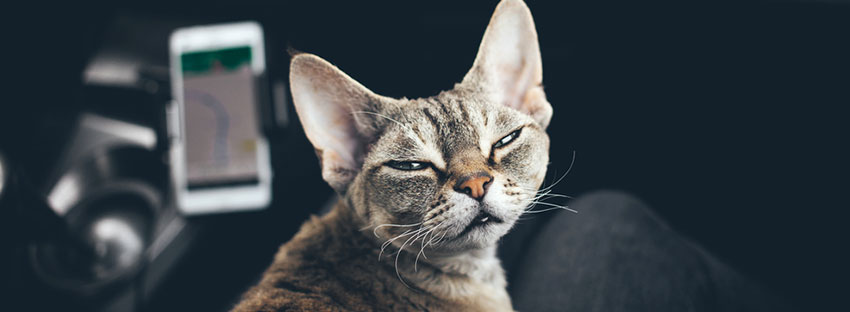
If you cat likes to go on car trips with you, then traveling a long distance by car is going to be a piece of cake. On the other hand if they detest it, it might not be the most enjoyable trip. Either way, you need to make sure that your cat is ready to travel with you. First, you definitely need a cat carrier when you are driving to help keep your cat safe and so you won't become distracted while driving.
You also need to make sure you cat has their collar on with their identification tag on it. If you cat doesn't like the car, you might want to try getting him used to it in advance by taking your cat out for short trips around the block or down the street. Before you leave on your trip, you need to make sure to pack your cat's bag as well as your own.
You need to make sure that you have their bowls, food, medication, litter box, litter, cat bed, cat toys, and some sort of scratching post so he doesn't tear up the room of wherever you are going. If you cat absolutely freaks out when you put him in the car, you might need to come up with another plan for your cat while you are away.
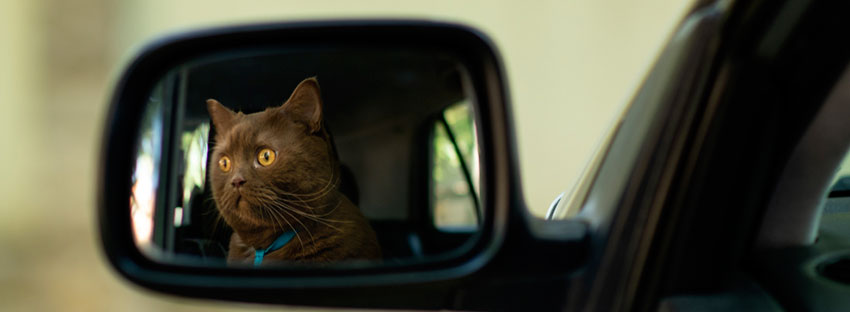
If you have the cat that freaks out whenever you try to travel by plane or by car, you will probably have to come up with a different plan. You can choose to leave your cat with friends, at home, or in a boarding place. Whatever you choose will probably depend largely on your cat and their attitudes and ability to adapt. A boarding place will allow you to leave your cat in a place where they will be taken care of.
Unfortunately not all pet boarding facilities are a great place to leave your pet, so you will have to do a lot of careful research before just dropping off your cat. A friend of family member might take in your cat so they can take care of all your cat's needs while you are gone. You can also choose to leave your cat at home if you will only be gone a short time, or have a cat sitter stay at your home with your cat.
Don't ask just anyone, make sure they can be trusted, and make sure to leave them with a list of things such as what food you feed, when you feed, when to clean the litter box, and any emergency numbers as well. For some, this might end up being the best option for their cat.
There are behaviors that many cats share, but you might not know the logic behind them. Below are many of these characteristics as well as explanations as to why you cat may perform them so you can better understand what you cat is trying to tell you.
• Ears: A cat's ears can say a lot about what they are feeling or trying to express to others, different ear positions mean different things
• Ears Forward: When the ears are forward and relaxed, then your cat is happy and listening to the sounds around them
• Ears Erect: This is when the cat is paying attention to something; they are alert to the happening around them
• Flattened Ears: This can relay fear or the cat being anxious
• Ears Turned Back: Your cat is either annoyed or aggravated, this is warning to whoever has caused their mood
• Ears Completely Flat: This means fearful and aggressive, plus the cat is probably hissing and have their eyes narowed

• Straight Up: This is a happy and content cat
• Horizontally Behind: This means that cat is relaxed, confident, and alert
• Straight and Quivering: Your cat is happy
• Straight with a Hook at the end: Your cat is being friendly, but is not quite sure of the situation, person, or other animal
• Straight and fluffy: This means your cat is feeling fear and is threatened
• Swishing Tail: This can mean your cat is being playful or that they are annoyed
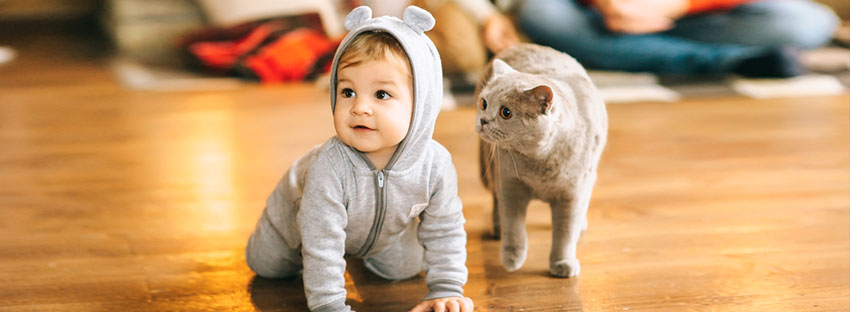
• Common Meow: This can mean they want to say hello, want their dinner and such
• The Call: This is when a female is in heat and looking for a male, kind of a howling sound
• The Chirr: Is when a female is calling her kittens or your cat may do it when they are being lovey with their owners, kind of a rolling sound
• Hissing: This is a warning sign that your cat is not happy and they are getting ready to attack
• Growling: Again, your cat wants to be left alone
• Purring: Your cat is happy and feels safe.
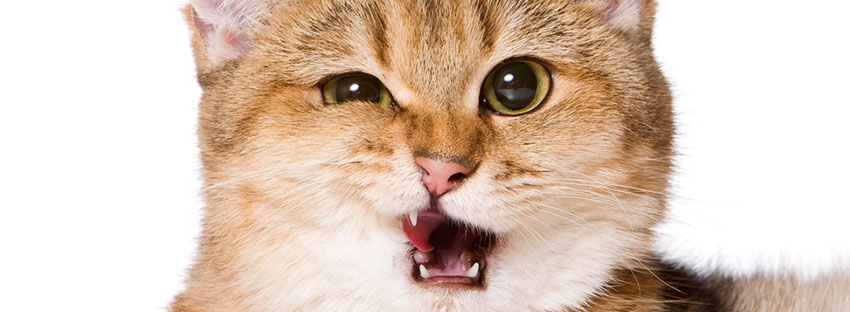
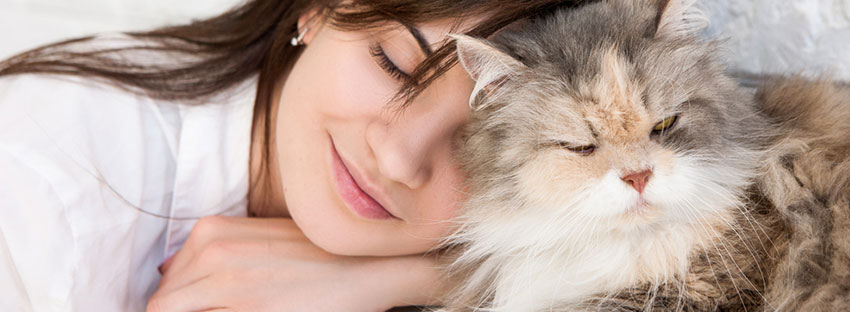
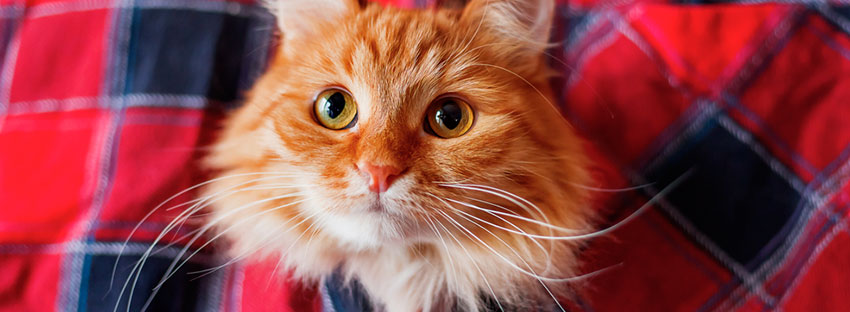

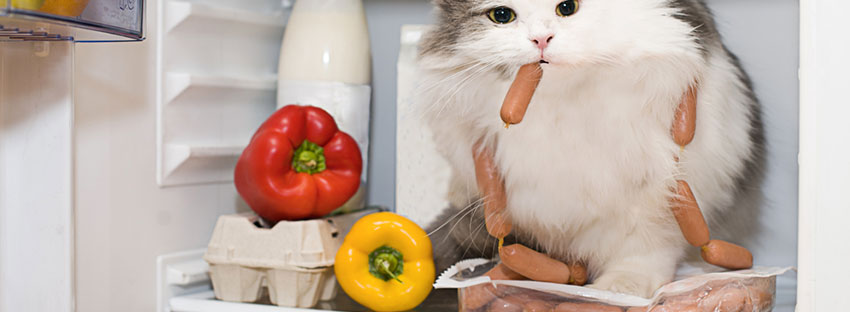
Cats tend to be a more independent type of pet which is why many people prefer them over other types of pets. However, you might find that your feline friend doesn't always do what he is supposed to. At this point you need to find a way to discipline your cat that doesn’t involve hitting and screaming at him. If you bought your cat as a kitten, the odds are they will pick on what is allowed and what isn't fairly quickly. If you bought an adult cat you might have to work on a few bad habits, but need to remember to be patient while doing so.
Below are a few ways that might help you deal with the disciplining of your cat, especially when it comes to particular areas.
The first thing that you should know is that it helps to use the same words when disciplining your cat, don’t change it up all the time because you will end up confusing your cat in the long run. If there is more than just you in the house, you need to make sure that your discipline techniques are uniform so that the cat will not be confused as to who they need to listen to.
You need to realize that you cat is not like a dog. They are not always going to obey when you call because they basically have a mind of their own. Although they do have a completely different personality, it is possible to get your cat to come to you if you call it and reinforce your command with positive behavior. You can do this by offering them so sort of reward such as petting them, brushing them, or giving them a treat.
If you are screaming at your cat to come to you with the thought that such an action will shock them into coming right over, you will soon realize that such tactics will not work with a cat as they saunter off in the completely opposite direction.
If you happen to have plants in your home that are not harmful to your cat, the odds are that you don't want your cat to destroy them. As mentioned earlier, cats are very curious and will try getting into everything. It is also important to note that it is instinctive for cats to claw or dig as they do in the litter box so if you are not care, they might do the same to your plants. In order to prevent the certain mess that will occur otherwise, you need to go to a craft store and purchase plastic needlepoint mesh.
Then cut it to fit the opening of the pot and a spot for your plant and then apply it over the dirt. This will keep your cat from clawing at the dirt in your plant. Chewing on plants is another matter entirely. All you need to do is spray the leaves and coat them with a cayenne spray or a bitter apple spray that you can get at most pet shops. The bad taste will keep your cat from chewing further.
Biting is not a fun thing when you cat has sharp little teeth. Often cats tend to bite or nip when they are playing around and in reality it is quite a painful shock when those teeth connect with your skin. In order to get your cat to stop this painful behavior, you need to take the right steps. The next time he decides to take a playful nip at whatever skin is handy you can choose to do one of two things, you can either hiss at him like another cat would do, or scream in pain. Either one of these reactions is sure to get your cat's attention and make him stop.
Cats are curious and some love to chew on things, especially what they are not supposed to be chewing on. For this reason it is very important to cat proof your house. Part of cat proofing involves keeping electrical cords out of reach of your cat because they will invariably end up chewing on them. If it is not possible to have your cords shortened, there is another method that you can try to keep them from chewing on cords that have electrical current running through them.
Try coating the cord with some different mixtures such as cayenne pepper, hot sauce, nail biting polish, or orange peel. You can also try organizing your electrical cords into tubes such as wrapping paper in on. This will keep them out of reach from your cat and help keep them safe from any electrical jolts.
Cats love to climb and explore, if you have curtains in your home when you get a cat you are just asking for disaster. This would definitely be a good time to consider switching to blinds. If you don't want to redecorate your house there are a few ways that you can make things a little safer for your cat. If you cat has a habit of climbing up the curtains, you might look into a rod that will fall when pressure is put on it, a few times of the curtains falling down might just scare your cat out of climbing them in the first place.
Also, you want to make if you have a cord on your curtains that your cat cannot end up choking themselves on this. If the cord is in a loop, you will need to cut it so that your cat doesn't get stuck and end up hanging themselves. Hopefully you can get your cat out of the habit of climbing your curtains before he ends up ruining them altogether.
It is simply not safe for your curious little cat to be jumping up on counters and tables while in the kitchen. Not to mention that it is entirely unsanitary as well for them to go from doing their duty in their litter box and then walking around on the counters that you prepare your food on. In all, it is not a good idea for you or your cat. You really don't want your cat to become accustomed to jumping up in the kitchen because eventually they are going to jump up onto a hot stove and seriously injure themselves.
There are different ways you can go about training your cat that the kitchen is an off limits area for jumping and exploring. The first method is to simply pick them up whenever they jump onto a kitchen counter top or table and tell them No! In a firm voice, and then to put them back onto the floor. Another idea is to stack items that can not necessarily hurt your cat, but will make a loud noise near the edge of the counter so they will fall down and frighten your cat when the jump up.
If neither of these ideas work, you can always resort to using the spray bottle of water, but try these first before you resort to more drastic means. Just remember that you are looking out for both the safety and health of your cat as well as yourself.
Not all cats respond to change great at first. Some will adapt right away whereas others require a little bit of time in order to make the change. Adding a new cat to the mix can be a stressful situation for any of your existing cats. You need to realize this in advance and do what you can to make the transition a little easier. Many cat owners find that the easiest way to accomplish this is to put the new cat into their own area for a few days so it can become used to its surrounding without being bombarded by other cats that have sonority in the home.
Make sure you are spending time with both the new cat and your other cats. Make sure that your new cat has access to food, water, and a litter box in the room they are in. After a bit, begin to leave the door open to the room that the new cat is in. Eventually your existing cats are going to become curious and check out the new cat. When this happens make sure that you go in as well to make sure nothing bad happens.
Pay attention to each cat and give them equal amounts of attention, this way neither cat will feel like you are fonder of one over the other which is extremely important. After a while the cats will work out the dynamics of their relationship, just make sure to continue showing an equal amount of affection for each cat.
Anytime that you decide to take a pet into your home you are taking the chance of having them destroy a lot of your belongings, including your furniture. What you need to remember, no matter how hard it might be at the moment, is that cat's do have a reason for what they do. For many, their cats have a problem with clawing up the furniture and for this reason they have their cat declawed.
This is an option, but might not always be the best one for your cat or for your reasons. You really need to think it through before you have your cat declawed. It is possible to help your cat transfer their urge to claw your furniture into clawing something else such as a scratching post.
It is possible to train your cat to you a scratching post for their stretching and scratching needs. This can be done quite easily by making the scratching post seem enticing. Some people choose to rub scents such as catnip or dressing it up with a toy or two to make it more appealing. You also need to keep in mind that you need to strategically place your cat's scratching post in an area where they can use it whenever they want to.
One of the keys to getting a scratching post that your cat will like is to make sure it is tall enough and sturdy enough. The great thing is that there are a variety of scratching posts available to fit every cat's preferences. Also make sure that you discipline your cat whenever you catch them scratching your furniture and praise them when they are using the scratching post, you cat will soon catch on that they will be petted and praised when doing what they are supposed to be doing.

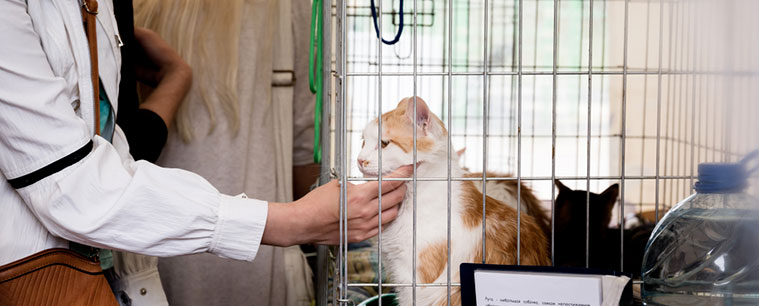
If you are looking for more information in regards to cat breeds or wish to research buying a purebred for breeding or showing purposes, you might want to contact one or all of the organization to get the information you need before you buy a cat that that might not be a right match for your plans.
IPCBA
P.O. Box 311
Upton, KY 42784
Phone: 270-561-3662
P.O. Box 1949
Nixa, MO 65714-1949
Phone: 4177251530
http://www.acfacats.com/
1805 Atlantic Avenue,
P.O. Box 1005,
Manasquan, NJ 08736-0805.
Phone: (732) 528-9797
http://www.cfainc.org/
You will also find that many of these organizations have joined or approved other cat organizations and clubs that might be located in your area, or somewhere close to you. You can find out where they may have organizations that are in particular parts of the country by calling or sending them an inquiry via email.
If you aren't concerned about getting a pure bred cat for breeding and showing purposes you might find yourself looking towards pet store for the purchase of your cat. Instead of going this route, if you are looking for a great pet and want to help a cat out in the process, there are other options available to you when you are searching for just the right cat. You might want to check in your local pet shelters or make inquiries into pet rescue agencies.
There are many kittens and cats that are discarded on a daily basis and are just waiting for someone to give them the home that they deserve. Going this route might end up saving you a fortune on what you might have paid at a cat breeder or local pet shop, plus you are helping cats in need as well.


If you are new to the idea of having a cat or have had a cat for years, you might find this dictionary useful in order to understand some of the terms that cat breeders, pet stores, or your veterinarian might use. Although it doesn't contain every term that refers to a cat, it does contain more of the regularly used terms that might leave you a little curious if you are not familiar with the terms.
ACFA: American Cat Fanciers Association Originating in 1955, ACFA has grown to be one of the world's largest cat organizations. ACFA is known as the Fairest, Friendliest and most Fun feline association! Our goal is to promote the welfare, education, knowledge and interest in all domesticated, purebred and non-purebred cats, to breeders, owners, exhibitors of cats and the general public.
Ailurophile: A Cat Loving Person as to
Ailurophobe: A person that hates cats.
Alopecia: Bald area that normally has hair.
Anestrus: Female cat is not in heat.
Antibiotic: A substance that is derived from a living organism and is used to inhibit the growth of bacteria.
AOC (Any Other Color): Not normally accepted color or pattern in a certain breed of cat.
AOV (Any Other Variety): Cat Association term to classify cats that are offsprings of registered parents but are not
eligible entering championship cat show classes because they do not have the official requirements for coat color, coat
length or other physical characteristics.
Awn hairs: The part of the cat's undercoat that is longer than the downy undercoat but shorter than the primary guard coat.
Back crossing: Inbreeding where a cat is mated with a parent.
Barring: Markings of aTabby cat .
Base coat: The primary coat.
Bi-Color: Cat color basically white with large patches another solid color.
Blaze: Stripe or splash of white on the cat's forehead or nose.
Bloodline: The pedigree for a cat of a specific cattery.
Booster vaccination: A follow-up Injection that is periodically after the primary injection to continue immunity to a disease.
Breed: Cats sharing common ancestors and similar physical characteristics.
Brindling: Different colored hairs in a coat.
Britches: Longer hair on the upper rear area of the legs.
Brush tail: Long bushy hair.
Calico: Cat color characteristic for female cats with patches of white, red and black.
Carrier: A cat carrying a genetic defect or disease.
Castration: Removal of testicles in a male cat. (Neutering)
Cat Association: An organization for the promotion of cats, cat breeds, cat shows and cat health.
Cat fancy: People who fancy cats and are involved in breeding, showing of cats and cat clubs.
Catnip: (nepeta cataria) A plant of the mint family and acts as a hallucinogen to cats.
Cattery: A place where cats are bred or boarded.
CCA: Canadian Cat Association/Association Feline Canadienne - includes registry of purebred cats, listing cat shows, show schedules, and Canadian breeders.
CFA: Cat Fanciers Association. - to the Cat Fanciers' Association, the world's largest registry of pedigreed cats !
CFF: Cat Fanciers' Federation.
Coarse: A cat not refined or harmonious in conformation. Considered a negative term.
Cobby: Short body, broad, heavy boned and low on the legs. (Persian or Manx)
Colorpoint: Cat's face, ears, tail and legs pattern.
Condition: Well being of a cat, including muscle toning, grooming and good health.
Conformation: Structure of a cat's body, legs and tail.
Cross: Mating or breeding one cat with another.
Dame: Female parent.
Dander: Scales of dead skin can cause an allergic reaction in humans.
Declawed: Surgically removing claws. Not allowed to enter competition.
Dew claw: The first digit found on the inside of the leg above the front paws.
Domestic: A nonpedigreed cat.
Down hairs: The shortest hair on the cat, soft and downy.
Ear furnishings: Tufts of hair that grows in and around the ears.
Ear mites: Tiny insects that feed on the lining of the ear canal.
Euthanasia: Humanely ending a cat's life.
Feline Immunodeficiency Virus (FIV): Virus that attacks the cat's immune system.
Feline Infectious Peritonitis (FIP): A coronavirus infection of the membrane lining the abdominal cavity. This disease leads to death.
Feline Leukemia Virus (FeLV): A virus that causes one of the most lethal infectious diseases found in cats. It is directly and indirectly the cause of many feline illnesses including cancer of the lymphocytes.
Feline Lower Urinary Tract Disease (FLUTD): Urinary tract disease causing urethral blockage and kidney stone formation.
Feline Urologic Syndrome (FUS): A disease of the urinary tract often responsible for blockage of the urethra in male cats. Life threatening.
Gingivitis: Inflammation of the gums.
Guard hairs: The longest, outer hairs of the cat's coat.
Heat: This is the period when a female cat is interested in mating and can become pregnant.
HHP: Household Pet.
Household pet: Domestic or purebred cat that is not registered and is a pet. Household pets can compete in special categories in cat shows.
Hybrid: Result of the mating cats of different breeds, or more than two breeds.
Hybrid vigor: Increased vitality resulting from breeding cats of two different breeds together.
Immunization: Helping with artificial resistance to infection.
Inbreeding: Mating of related cats.
Kitten: A young cat between four and eight months.
Line Breeding: Mating related cats that have a common ancestor appearing at least one time in the first three generations of both parent's pedigrees.
Litter: Kittens born by the same mother at the same time.
Litter: Absorbent material used in a cat's box.
Natural breed: Breed without the interference of selective breeding.
Neuter: Castrated male cat by removing the testicles so it can't reproduce.
Outcross: Breeding of two cats together that don't have an ancestors in common for a minimum of three generations.
Pedigree: Document outlining names, titles, colors and registration numbers of cat's ancestors. At least three to five generations.
Premier: A registered neutered or spayed pedigreed cat.
Purebred: A cat whose ancestors are of the same breed or are allowable outcrosses.
Queen: Female cat used for breeding purposes.
Quick: Vein that runs through a cat's claw.
Rangy: Long body.
Rex: Type of coat with no guard hairs but a soft and curly undercoat.
Ringworm: Contagious skin disease caused by a fungus.
Ruff: Collar-like fringe of hair around the neck.
Selective breeding: Intentional mating of two cats in order to achieve a trait or to eliminate a trait.
Self: Cat that is of one solid color from the base to the tip of the hair shaft.
Set type: Breeding term to describe the process of breeding successive generations of cats with certain characteristics in hopes of producing cats that will possess the trait and also be able to pass it along to their offspring.
Single coat: One coat, usually the top coat or guard hairs, without the downy undercoat.
Sire: Male parent of a kitten.
Spay: Female cat which has been sterilized through a surgical procedure.
Stud: Male cat.
Ticking: Darker tips of hair on the ends of the coat hairs.
TICA: The International Cat Association.
Tom Cat: Unaltered male cat.
Tortie: Also called tortoiseshell. Usually a female. The coat colors are cream, red and blank intermingled together.
Tufted: Hair on the tips of the ears and or between the cat's toes.
Undercoat: Soft and downy hairs next to the skin.
Variety: A cat that has registered parents but is not eligible for championship status because it does not conform to the breed standard.
Weaning: Kittens learn to eat food, not depending on the milk of their mother.
Sharing is Caring
"The 10 foundations of a fulfilling relationship with her cat"

© My Awesome Cat